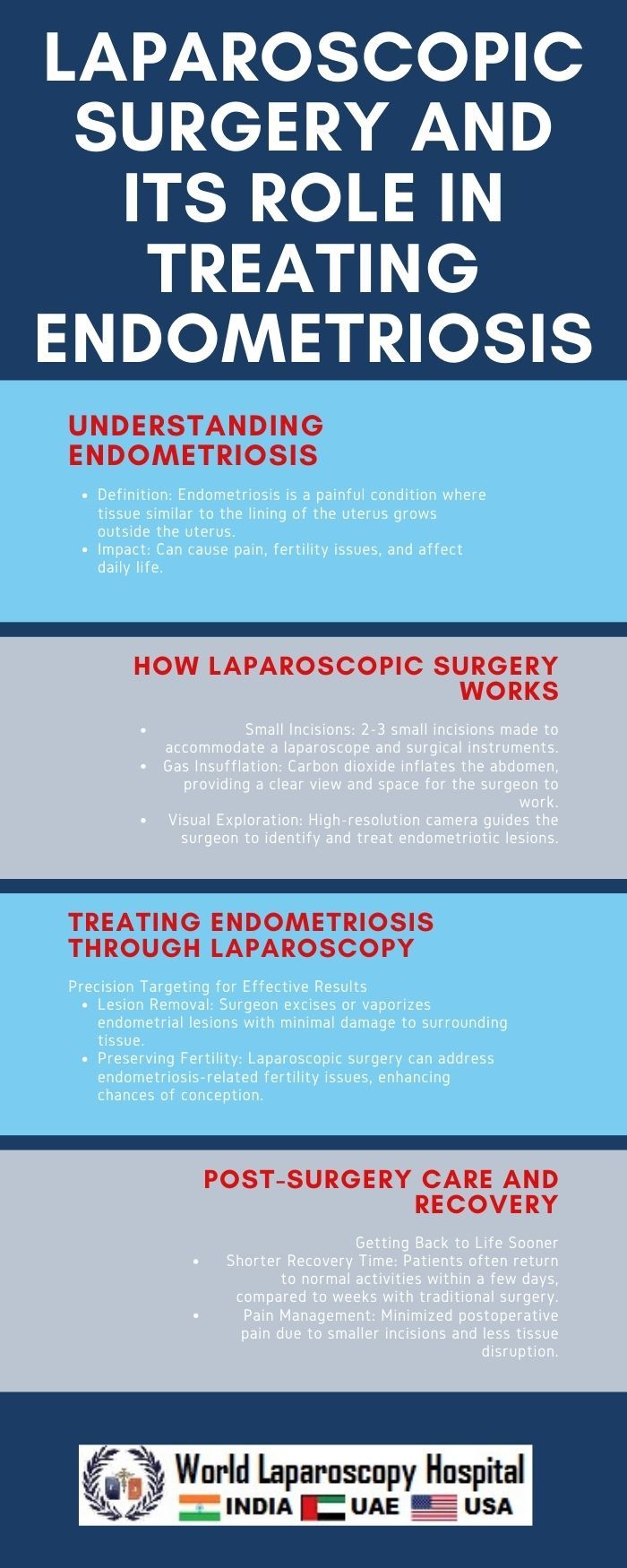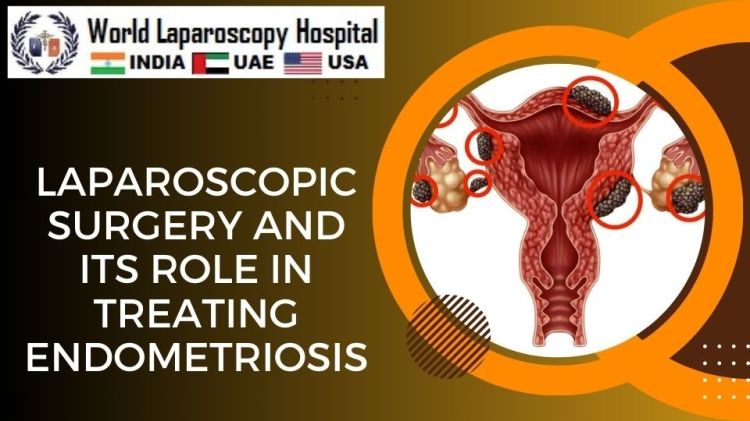Laparoscopic Surgery and its Role in Treating Endometriosis
Introduction:
Endometriosis is a chronic medical condition affecting millions of women worldwide, characterized by the abnormal growth of endometrial tissue outside the uterus. This condition can lead to debilitating pain, infertility, and a significant decrease in the quality of life for those affected. Among the various treatment options available, laparoscopic surgery has emerged as a groundbreaking approach in managing endometriosis, offering patients a minimally invasive alternative with remarkable results.

Understanding Endometriosis:
To comprehend the significance of laparoscopic surgery in treating endometriosis, it's crucial to first understand the nature of the condition. The endometrial tissue, which usually lines the inside of the uterus, can develop outside the uterus in areas such as the ovaries, fallopian tubes, and the lining of the pelvis. This misplaced tissue responds to hormonal fluctuations in the same way as the tissue inside the uterus, leading to inflammation, scarring, and the formation of adhesions.
Symptoms of endometriosis include pelvic pain, dysmenorrhea (painful menstrual periods), dyspareunia (pain during intercourse), and infertility. The severity of symptoms varies, with some women experiencing mild discomfort and others facing severe pain that significantly impacts their daily lives.
Traditional Treatment Approaches:
Historically, managing endometriosis involved a combination of pain medications, hormonal therapies, and in some cases, major abdominal surgeries. While these approaches could provide relief, they often came with side effects and long recovery periods. Additionally, not all women responded positively to these treatments, highlighting the need for alternative, more effective options.
Enter Laparoscopic Surgery:
Laparoscopic surgery, also known as minimally invasive surgery or keyhole surgery, has revolutionized the management of endometriosis. This advanced surgical technique involves making small incisions through which a laparoscope, a thin tube with a camera and light source, is inserted into the abdominal cavity. This allows the surgeon to visualize the internal organs on a monitor and perform precise surgical procedures with specialized instruments.
Advantages of Laparoscopic Surgery in Endometriosis:
-
Minimally Invasive Nature:
- Unlike traditional open surgeries that require large incisions, laparoscopic surgery involves small cuts, reducing trauma to surrounding tissues.
- Smaller incisions contribute to faster healing, reduced postoperative pain, and a shorter hospital stay.
-
Enhanced Precision:
- The laparoscope provides high-definition imagery, enabling surgeons to identify and target endometrial growths with greater precision.
- This precision minimizes damage to healthy tissues, reducing the risk of complications.
-
Faster Recovery:
- Patients undergoing laparoscopic surgery for endometriosis typically experience quicker recovery times compared to traditional surgery.
- The reduced trauma to the body allows for faster return to normal activities, including work and daily routines.
-
Improved Fertility Outcomes:
- For women struggling with infertility due to endometriosis, laparoscopic surgery can be particularly beneficial.
- By removing or excising endometrial tissue and addressing anatomical distortions, laparoscopic surgery can enhance fertility in many cases.
Types of Laparoscopic Procedures for Endometriosis:
-
Laparoscopic Excision:
- In this procedure, the surgeon uses specialized instruments to cut out or excise endometrial growths.
- Excision is considered more thorough than other methods, as it removes the entire lesion, reducing the likelihood of recurrence.
-
Laparoscopic Ablation:
- Ablation involves using energy sources, such as lasers or electrical current, to destroy endometrial tissue.
- While less invasive, it may not be as effective in cases of deep infiltrating endometriosis.
-
Laparoscopic Hysterectomy:
- In severe cases where conservative treatments fail, a laparoscopic hysterectomy may be recommended.
- This involves removing the uterus and sometimes the ovaries, providing a definitive solution for endometriosis-related symptoms.
Challenges and Considerations:
While laparoscopic surgery offers significant advantages, it's essential to acknowledge potential challenges and considerations associated with the procedure.
-
Skill and Expertise:
- Laparoscopic surgery requires specialized training and expertise.
- Surgeons with experience in endometriosis excision are better equipped to navigate the complexities of the condition.
-
Disease Recurrence:
- Endometriosis is known for its tendency to recur even after surgical intervention.
- Close postoperative monitoring and a comprehensive follow-up plan are crucial to address any recurrence promptly.
-
Cost Considerations:
- While laparoscopic surgery can be cost-effective in terms of reduced hospital stays and faster recovery, it may still pose financial challenges for some patients.
-
Patient Selection:
- Not all cases of endometriosis are suitable for laparoscopic surgery.
- The severity and extent of the disease, as well as individual patient factors, must be carefully considered when determining the appropriate course of action.
Conclusion:
Laparoscopic surgery has emerged as a game-changer in the treatment of endometriosis, offering a minimally invasive alternative with numerous benefits. From improved precision and faster recovery to enhanced fertility outcomes, this advanced surgical approach provides hope and relief to women grappling with the challenges of endometriosis.
As technology continues to advance, the field of laparoscopic surgery is likely to see further refinements and innovations, ultimately benefiting more women worldwide. The ongoing collaboration between medical professionals, researchers, and patients will play a crucial role in shaping the future of endometriosis management, with laparoscopic surgery at the forefront of this transformative journey.
